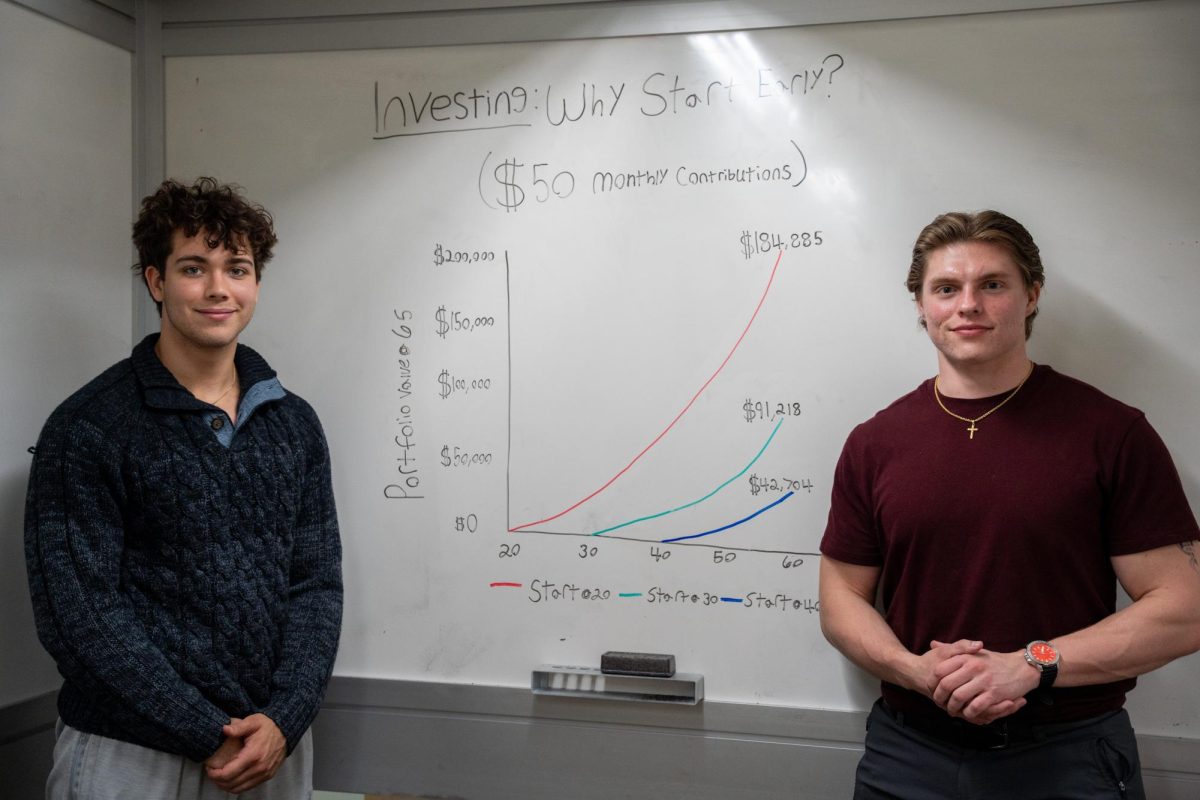After Uvalde, Grinnell-Newburg School District tightens school security measures
September 12, 2022
Following the May 24 shooting at Robb Elementary School in Uvalde, Texas, the Superintendent of the Grinnell-Newburg School District (GNSD), Janet Stutz, announced in a press release that the district will upgrade security measures to ensure student safety against the threat of mass violence.
Stutz was unable to meet with the S&B to discuss district-wide policies.While many new policies are district-wide, other recent changes are specific to each school within the GNSD.
Kevin Seney, Principal at the Grinnell-Newburg High School (GNHS), said that new measures at the GNHS have been taken since the shooting in Uvalde to prevent and respond to threats of mass violence.
The GNHS has partnered with emergency services, including the Grinnell Police Department (GPD), to render emergency scenarios, called “tabletop exercises.” During the exercises, the emergency scenario coordinator of GPD gives faculty and school administrators hypothetical situations where they explain how they would react in those situations. Then, the GPD coordinator provides feedback to their responses.
Captain Dan Johnson of the GPD said that GNHS administrators and faculty are very receptive to the feedback given to them. Seney said that GNHS has closed off all entrances, excluding the East entrance, based on GPD recommendations. The reason he cited was that having too many entrances makes it much more difficult to keep track of who comes into the building
GNHS also monitors who comes in, as all visitors who come after the doors lock each morning must use an intercom to talk to administrative aids, who make sure the visit is for a legitimate purpose and escort the visitors to their destination. This escort process is also utilized for students who come late for any reason.
Some faculty and administrators stand watch at the entrance of the high school in the morning, as students arrive before the doors lock, to monitor potential suspicious activity.
GNHS partnered with a non-profit organization called I Love U Guys, whose purpose is to help train schools in crisis response and post-crisis reunification.
The same program seeks to standardize the language used in crisis management across the district. This way, as students progress through the school system and staff travel between schools, they are more likely to understand what everything means regardless of where they may be in the district, Seney said.
In the event of an emergency, GNHS will use the intercom system to let people in the school know the last known location of the threat so that teachers may act appropriately, whether that be evacuating the classroom if the threat is far away or barricading the classroom if the threat is closer.
GNHS also uses the Infinite Campus system, a digital information system for students, as a way to communicate with parents in the event of a threat present. Seney said he would first inform 911 and then Stutz in the event of an emergency, who would then use the system to inform parents and the other schools of what is happening. Seney said the entire process should take approximately 30 seconds.
Seney said if something happens in one of the GNSD schools, it will affect the entire district. For example, if a threat presents itself at the high school, all other GNSD schools would be in lockdown so that nobody may enter or exit the schools until the threat has been cleared.
Not all measures taken are meant to be a response to a threat; there are also some that act preemptively.
If staff at GNHS notice suspicious activity from a student, members of the GNHS staff will form a crisis team made up of the dean of students, a social worker, school counselors, any teachers involved and Seney as well.
The team would assess the behaviors of the student, looking for known red flags and listening to intake from other students. Should the team decide that the student poses a credible threat, they would inform the police to do a joint-threat assessment.
Johnson also said that GPD has officers on campus every day at different times to monitor for possible suspicious activity, as a preemptive measure.
The average response time of first responders is three minutes, Johnson said.
“God forbid if we ever have some[thing] like this, we need everybody to stay away,” Johnson said about school threats. “Because if we have people showing up … all it does is it hurt our investigation. Then, it’s just more things that we’ve got to try and deal with and contain when we just need everybody to kind of clear out. Let us do our thing.”
GNHS is also working towards upgrading some systems like door locking mechanisms, safety alarms and visitor traps. However, these are costly endeavors so the district is looking for funding to accomplish this, Seney said.
Seney mentioned that Stutz has been looking into this all summer, and that in the future he will be joining her in the search for funding.
The high school has been building up its safety measures in recent years due to the national problem with gun violence, not just as a response to the most recent case in Uvalde, Seney said.
Seney said he cannot disclose all safety measures currently in place due to public safety concerns. However, Seney said that GNHS does take feedback from the students and their families in whether they generally feel safe or not.
Grinnell High School President of the Student Council Tamer Bush said that he believes there is a general sense of discontent among the student body regarding some of the new measures. He said students find them inconvenient, but they accept and understand that it is for their safety. He also said he believes students feel safer with the measures in place.
The new policies limit the ability of students to walk freely across campus, Bush said. He explained that in the past, when a student left something in their car, they could just let the teacher know they had to get something from their car, and then come back after retrieving the item.
However, students now need their guardian to call a member of the administration to give permission for the student to leave the premises. If permission is granted, the student needs a staff member to chaperone them to the car and back.
Bush said that he feels like most students take threats more seriously than they have in the past.
He said, “Just because we’re a small town in Iowa doesn’t mean it can’t happen to us.”

















































